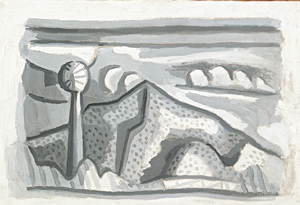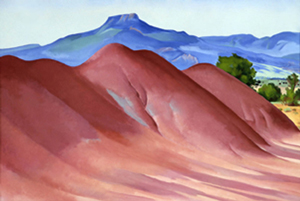 Although New Mexico is considered by most outsiders to be a desert, mountainous regions cover a significant portion of the state. In fact, there are 88 named mountain ranges in the state of New Mexico. The Rocky Mountains run along the northern region of the state and are known as the Sangre de Cristo (Spanish for Blood of Christ) Mountains. These mountains run along the eastern edge of the Rio Grande River and include Wheeler Peak, which reaches the highest point in New Mexico at 13,161 feet above sea level. To the west of the Rio Grande are the Nacimiento and Jemez Mountain ranges.
Although New Mexico is considered by most outsiders to be a desert, mountainous regions cover a significant portion of the state. In fact, there are 88 named mountain ranges in the state of New Mexico. The Rocky Mountains run along the northern region of the state and are known as the Sangre de Cristo (Spanish for Blood of Christ) Mountains. These mountains run along the eastern edge of the Rio Grande River and include Wheeler Peak, which reaches the highest point in New Mexico at 13,161 feet above sea level. To the west of the Rio Grande are the Nacimiento and Jemez Mountain ranges.
 New Mexico also contains abundant volcanic landscapes which include Mount Taylor and Sierra Grande, and the cinder cone Capulin Mountain. The Guadalupe mountain range, which runs through both New Mexico and Texas has also formed many beautiful chasms over the past million years, including McKittrick Canyon, Dog Canyon, Valley Canyon and many others. Once part of the ancient Capitan Reef, which formed at the outskirts of a shallow sea, the range is built up entirely of limestone. Carlsbad Caverns, one of the most well known cave sites in the world, is one of the Guadalupe’s treasures. William Sublett's lost gold mine is also very famous throughout the Southwest, claiming hundreds have roamed the Guadalupes for years in search of it.
New Mexico also contains abundant volcanic landscapes which include Mount Taylor and Sierra Grande, and the cinder cone Capulin Mountain. The Guadalupe mountain range, which runs through both New Mexico and Texas has also formed many beautiful chasms over the past million years, including McKittrick Canyon, Dog Canyon, Valley Canyon and many others. Once part of the ancient Capitan Reef, which formed at the outskirts of a shallow sea, the range is built up entirely of limestone. Carlsbad Caverns, one of the most well known cave sites in the world, is one of the Guadalupe’s treasures. William Sublett's lost gold mine is also very famous throughout the Southwest, claiming hundreds have roamed the Guadalupes for years in search of it.
 Mountains have different zones, which make up the various ecosystems found at different elevations. The highest elevation is called is called the alpine zone at 11,500 ft. The sub-alpine zone begins at 9,500 ft., the coniferous forest zone at 8,500 ft., the transition zone, grasslands and woodlands zone at 7,000 ft. and the desert zone at 3,000 ft. Different animals and plants are found in each of these zones, as different climates and conditions are found at each level. The riparian zone is the transitional area between water and land, usually consisting of shrubs and grasses, and are habitats for a great variety of birds and animals.
Mountains have different zones, which make up the various ecosystems found at different elevations. The highest elevation is called is called the alpine zone at 11,500 ft. The sub-alpine zone begins at 9,500 ft., the coniferous forest zone at 8,500 ft., the transition zone, grasslands and woodlands zone at 7,000 ft. and the desert zone at 3,000 ft. Different animals and plants are found in each of these zones, as different climates and conditions are found at each level. The riparian zone is the transitional area between water and land, usually consisting of shrubs and grasses, and are habitats for a great variety of birds and animals.
For more information about the volcanoes of New Mexico visit» http://geoinfo.nmt.edu/publications/periodicals/earthmatters/6/EMV6N1.pdf
Exhibit Home » Geography and Environment » Land Forms » Mountains » History/Text: Mountains
